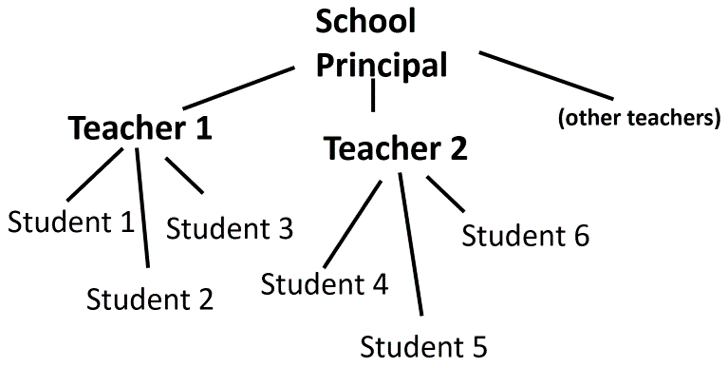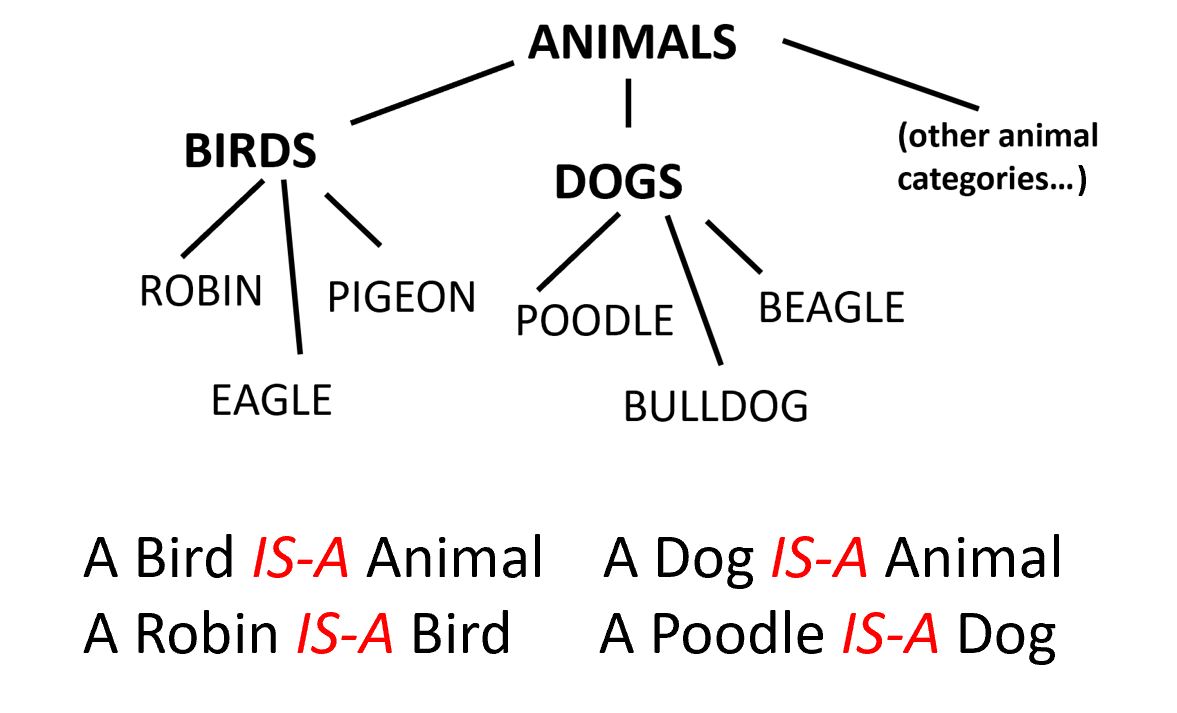15 Understanding “Hierarchy” in Organizing
“Hierarchy” is a word that often comes up when talking about how things are organized. There are two ways to define it.
1. HIERARCHY = POWER STRUCTURE
“Hierarchy” can mean “power structure” or “control structure” and usually involves specific people or things – there is someone or something at the top of the hierarchy, which controls a set of people or things at the levels below. The members of each level have less power than the ones above it. For example, in your school there is an organizational hierarchy like this:

2. HIERARCHY = “IS-A” RELATIONSHIPS
Another kind of hierarchy is useful for more kinds of organizing because it is based on “meaning” or “is-a” relationships between types of things or concepts that are organized in categories. You create a hierarchy when you organize things like books, clothes, or toys by creating more specific categories for each kind of thing. For example, if you sort your books into categories for science, sports, history, and comics you are creating a hierarchy.
This type of hierarchical organization is used by biologists and botanists when they organize species of plants and animals. In that context the category hierarchy is often called a taxonomy. Here is a small part of an ANIMALS hierarchy:
The large and broad category at the top of the hierarchy like ANIMALS is sub-divided into smaller and more specific categories using property tests.
For example, the sub-category of BIRDS is identified by property tests like:
- Does the animal have wings with feathers?
- Does it have a beak?
The sub-category of DOG is identified by property tests like:
- Is this a domesticated four-legged meat-eating animal?
- Does it have fur?
- Does it make barking or whiny sounds?”
These sub-categories can be sub-divided again with more specific property tests; each member of a sub-category is also a member of all the categories above it in the hierarchy. This kind of hierarchy is organizing TYPES of things, not specific things like the power hierarchy does.
The hierarchical organization of a grocery store helps you find specific things because you can use categories like “produce” and “dairy” to focus where you look in the store. If you are looking for lettuce you know it will be in the produce section, not the dairy section.



